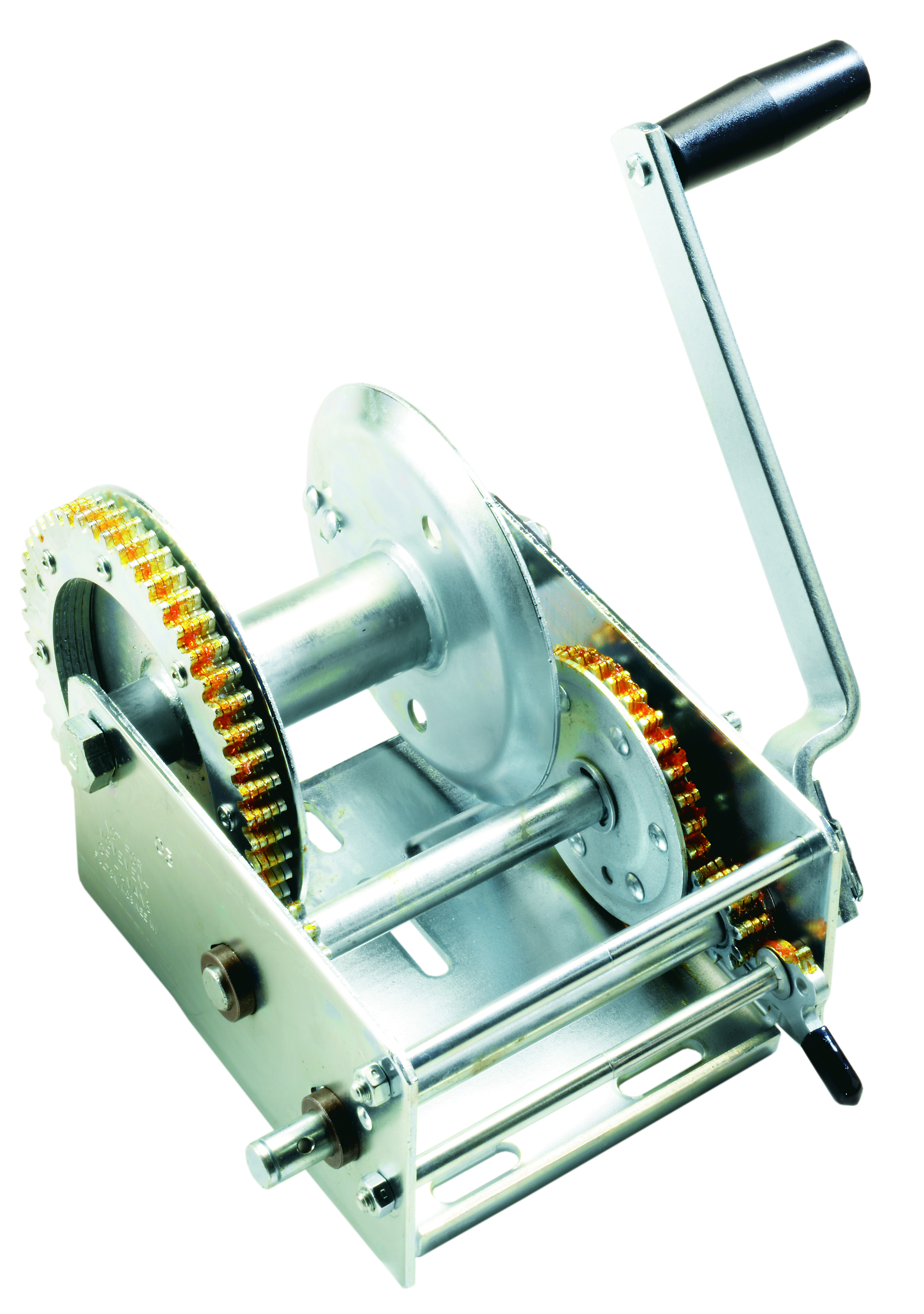
Fulton T3700
T SERIES RATCHET WINCHES
A full range of single and two speed ratchet winches is available to meet the toughest pulling demands. These are designed for boat and car transporter trailers and similar pulling applications only and allow the load to freewheel when the ratchet is in the neutral position.
Single speed winches take ropes or web strapping. Some two speed models take wire ropes – but not all – please see chart for details.
file_downloadBrochure mailEnquireFEATURES INCLUDE
- Full length drum bearings
- Oil impregnated shaft bearings
- Efficient gear ratios
- High carbon steel gears for superb strength ensuring long life
- Zinc plate finish provides excellent corrosion resistance in all environments
- Comfort grip handles
T SERIES TWO SPEED RATCHET WINCHES
Make light work moving heavy loads with the two speed ratchet winch. These models are designed where higher pulling forces are required and in particular where the distance for the load to be winched is greater.
The fast speed enables quick pull in for lighter loads and a second low speed for increased mechanical advantage.
A good example of this is winching a rolling load onto a trailer where it is relatively easy to move the load on the flat but maximum pulling power is required as it comes up the inclined ramp. The faster speed is also time saving when the strap or rope is being re-wound onto the drum after use.
The shift lock design is also very useful as it allows changing gears without moving the crank handle between shafts.
POINTS TO BE CONSIDERED WHEN CHOOSING YOUR ‘T’ SERIES WINCH
- The winch capacity stated on the charts for all models is the maximum pulling force that can be exerted in the rope, wire or strap on its first layer and to achieve this a force of 18kg must be applied by the operator to the winch handle. As the layers on the drum increase the line pull force will reduce by approximately 10% per layer. For this reason it is essential to select a model that is easily capable of winching the load without the maximum force being applied. See selection chart for a guide to the winch model best suited to the application.
- Two speed ‘T’ series models should be selected for heavier applications and where the load is being moved a longer distance.
- To calculate the approximate force required to move a rolling load up an incline the following formulae may be used. Where W is the load in kgs and ± is the gradient in degrees. As a guide ramp angles are rarely more than 16° and a gradient of 1:8 is only approximately 10° W/25+(W x ±)/60 As an example if a rolling load weighing 1750kg is winched up a gradient of 15° the minimum force required will be as follows:-1750/25+(1750 x 15)/60 = 507.5kg
If for the exercise it is assumed that this force occurs when the winch is on its third layer then this should be increased by 30% to 624kg being the actual force applied to the bare drum. It must now be remembered that if a winch just capable of doing the job is selected then a force of 18kg will need to be applied to the winch handle. As this is high it will be much easier for the user if a winch with a larger capacity of say 1180 kg is selected. - Single Speed ‘T’ series models are only suitable for use with webbing straps or soft rope and are designed for moderate loading and short pull in distances
- If a ‘T’ series winch is being used with a wire rope then only the following two speed models incorporating larger drum diameters are suitable:- T2025, T2625, T3205, T3205B
and T3700
